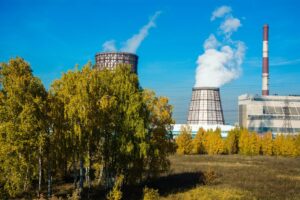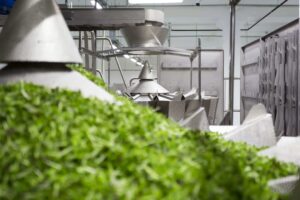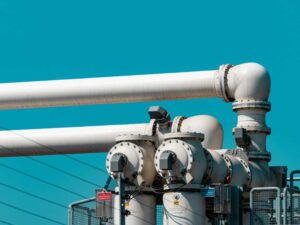With the recent developments in Business Responsibility and Sustainability Reporting (BRSR) in India, corporates across the region are building strong ESG programs and learning from their peers along the way.
Many organizations have been reaping the benefits of a strategic focus on sustainability and ESG, as they see their businesses reducing costs and increasing revenue due to a focus on sustainable operations across the company. However, most organizations have only just begun this journey and are learning from the challenges and successes faced by their peers, incorporating these insights into their own programs.
As you read ahead, we will uncover how companies in India are building their ESG programs, reporting their ESG metrics, and tackling challenges along the way!
How are Organizations Reporting their ESG Metrics in India?
At present, the top 1000 listed companies in India are already reporting their ESG metrics under the BRSR. While BRSR reporting is underway, companies also report under global frameworks including GRI, SASB, CDP, and others in response to stakeholder requests.
Additionally, on June 26, 2023, the International Sustainability Standards Board (ISSB) marked a significant milestone by releasing its inaugural standards, IFRS S1 and IFRS S2. These Standards establish a universal language for disclosing the impact of climate-related risks and opportunities on a company’s prospects.
IFRS S1 sets out comprehensive disclosure requirements, allowing companies to communicate sustainability-related risks and opportunities over the short, medium, and long term to investors. Meanwhile, IFRS S2 focuses on specific climate-related disclosures, designed to complement and be used in conjunction with IFRS S1. Both Standards fully incorporate the recommendations of the Task Force on Climate-related Financial Disclosures.
Many organizations now have working systems to collect and report their ESG data to stakeholders under the above frameworks. As corporates work to improve their sustainability programs, they are also working on SEBI’s recent announcement that proposed supply chain ESG disclosures under the BRSR Core for the top 250 companies in 2024, with the need for assurance from the coming year.
This brings a new challenge to the table, with ESG professionals now grappling with the question
How do we efficiently collect value chain ESG metrics, report them, and ensure that there is significant improvement in sustainability across the supply chain?
Challenges in Supply Chain ESG Reporting in India
A recent article expressed the current challenges India Inc is facing around their supply chain ESG reporting. For Instance, Larsen & Toubro will be reaching out to 20,000 of its 100,000 suppliers in the coming year and will request information on their carbon emissions, water footprint, and other metrics.
Similarly, ITC, an FMCG conglomerate is wondering how it can successfully source supply chain ESG metrics from millions of smaller suppliers like its agri-business partners and farmers.
However, there are several challenges involved in reporting ESG metrics for the supply chain. Corporates in India find that a significant portion of their supply chain partners are small, unlisted firms, and it can be difficult to communicate the value of sustainability to these partners. Additionally, collecting and tracking ESG metrics across the value chain including Scope 3 emissions and reporting these can be tricky.
ESG Reporting in India – Sector-Specific Challenges
For many companies, BRSR reporting appears to be a one-size-fits-all approach and corporates struggle to adapt the requirements to their specific sectors and industries. SEBI has not yet released the detailed list of KPIs for BRSR Core, which will be essential for a fair analysis. A common yardstick approach may also be challenging, as some ESG parameters (e.g., product recall policy) are more relevant for specific industries than others.
However, this challenge is being recognized and the government is taking active steps to support industries in reporting their ESG metrics and improving their sustainability and ESG programs. Take for instance the recent development where the Central & Tamil Nadu Governments have appointed a consultant to identify measures to support ESG compliance by apparel and textile units.
Learnings – Building Your ESG Program, Tackling Challenges, & the Roadmap to Success
In this complex ESG landscape, learning from the successes and approaches taken by peers is essential for corporations to meet their ESG goals collectively. For instance, Dr L.R Manjunatha, VP, Direct Sales and Sustainability at JSW Cement discussed how the Cement and steel industries, the backbone of sustainable infrastructure in a low-carbon economy, will need to accelerate their efforts to reduce their carbon footprint in an economy where the demand for cement is growing. The organization has proactively addressed its carbon emissions to achieve CO2 emissions of 215 kg/T in cement production, compared to the national average of 560 kg/T.
To achieve this, JSW Cement has adopted various measures and projects including reducing the clinker ratio in blended cement products and replacing it with Supplementary Cementitious Materials (SCM) like slag and fly ash, using biomass and waste materials as fuels, creating new and innovative products using geopolymer cement/concrete, and more!
Similarly, Dr. Jagannathan, Senior General Manager, Sustainability at Sobha Realty, expressed how the built environment is responsible for over a third of the global CO2 emissions, and organizations in the industry need to ensure active measures need to be taken to ensure sustainability is a critical factor in influencing decision-making from the concept to design and construction stages. At Sobha Realty, the team has adopted an integrated model that ensures sustainable design is achieved in practice – from using optimal materials that can reduce embodied emissions, using renewable energy in construction sites, and the usage of green cement, tools powered by solar to reduce emissions associated with construction facilities.
A solid integrated approach to achieving Net-Zero would involve understanding your operations’ emissions and emission sources and strategically planning to reduce them and report under various global frameworks, including GRI, TCFD, GRESB, and more!
As organizations grapple with new and emerging challenges in the ESG reporting landscape, they are actively looking towards their peers to adopt the best strategies to stay ahead of their ESG and Sustainability Goals.
Join us at the Upcoming ESG Masterclass Series 2 Part 3 to learn from ITC on their ESG Program Successes and Challenges
In this Benchmark Gensuite ESG Masterclass Series 2 Part 3, you will hear from ITC on
- The foundations of ITC’s ESG and sustainability programs
- How ITC overcame the main challenges of developing a robust sustainability and ESG program
- How your teams plan to continuously enhance your ESG and sustainability performance
- The best way to respond to ESG disclosure requests from various stakeholders, including governments, investors, and consumers.
You will also hear from Benchmark’s in-house digital ESG experts on the power of digital transformation in tackling ESG challenges, empowering businesses to achieve sustainability goals effectively.



